Next time you pick up a needle and thread, take a moment to reflect. Consider how the simple act of stitching connects us with people, places and traditions throughout history across the world. For thousands of years, humans have sewn, embroidered and embellished cloth, the latter often extravagantly employed in order to denote power, wealth or status.
Today, traditional techniques, such as goldwork or crewel work are the embodiment of history and tradition. But they are far from being relics of the past. Stitching – the simple act of needlework whether for practical or creative outcomes – well, this still belongs to everyone.
Step forward Tracy A Franklin, who has managed to create a multifaceted career in hand stitch, and whose name in the UK is synonymous with the art of traditional embroidery.
Tracy grew up with a passion for embroidery and dressmaking, gleaned from both her mum and her grandmother. She established an embroidery studio in Durham in northeast England in the early 2000s, since when she’s taught thousands of embroidery enthusiasts the joys and rewards of creating with needle and thread.
Tracy’s expertise is grounded in traditional techniques such as crewel work, silk shading, goldwork and whitework amongst others, and she’s taught embroidery both online and in person for institutions including the Royal School of Needlework and City and Guilds, as well as offering her own courses.
While her passion for tradition remains at the heart of her practice (she is also a conservator and restorer of embroidery) Tracy’s creative curiosity remains unfettered. Over the years, her interest in the textile arts has grown: she even explores how traditional and contemporary approaches to embroidery intersect in three books she’s written (see Tracy’s bio, below).
Increasingly, what Tracy finds most fascinating is exploring one small aspect of embroidery – whether it’s one stitch or one technique – fully and without limits. It’s a rewarding combination of playful experimentation and learning from tradition – one we’re sure you’ll be fascinated to read more about.
Life stitch by stitch
TextileArtist.org: Can you describe your studio for us, and share a little of what goes on there?
Tracy A Franklin: I became freelance in October 2001 and initially worked from my parent’s house, but it became apparent I needed some dedicated space to work professionally.
I was pointed in the direction of Durham City Arts in 2003, who at the time managed Fowlers Yard in Durham City. I viewed some of the empty studios that were available and applied for No.3. The buildings themselves have been various things – garages, a youth hall – but had been renovated as a millennium project destined to be creative workspaces.
It is one of the best things in my life to have a studio in the city centre. There’s a core of art professionals that have been here for more than 10 years.
My studio has a large downstairs floor space where I teach, and an open mezzanine upstairs, where I have my desk, stock and paperwork. When I got my studio space, I also received an arts grant to furnish it and added extra lighting and heating too.
There’s quite a lot of light from the front glass double doorway and the two back windows, which overlook the River Wear. Fowlers Yard is a very quirky street built on a slight incline, and on a curved road, with all the studios being different sizes.
Inside the studio, I have shelving space for books, threads, fabrics, pigeonholes of wool, and ring frames hanging from hooks from underneath the mezzanine floor.


How would you describe your embroidery practice?
I still love traditional techniques, whether it is crewel work, silk shading, goldwork, or whitework. What I have increasingly found more fascinating is exploring one small aspect, whether it is one stitch, or one technique, fully and without limits. This could be about scale, colour, materials used, or experimenting with the technique itself.
I find the process more interesting than a finished piece, and I would rather create many explorative samples than work a finished design. My book, Crewel Work (2010) was based on that idea.
Tell us about teaching, and what you find rewarding about being a tutor?
I teach mainly the Certificate and Diploma courses for the Royal School of Needlework (RSN). I have taught on these courses for over 20 years, starting at Hampton Court, where the RSN is based, progressing to teaching in my studio, and now online to an international audience since 2020. I’ve also taught this course overseas in the USA.
I find that I learn so much when teaching, as I spend a lot of time working with students and their ideas. My knowledge increases, and I feel confident in solving issues and problems.
Likewise, I taught City & Guilds for 10 years, which contrasted with the Royal School of Needlework teaching. I found it to be so much more contemporary, explorative, and open to interpretation. Whereas the RSN course is much more about perfection, and perhaps working one technique one way to fit a design, which is mounted and finished.
I enjoy teaching both ways but would love to teach a longer course in learning technique in various ways and building an archive of sampled ideas.
I have been head Broderer at Durham Cathedral for over 10 years now. The Broderer group existed before I came along, but I was naturally interested in it as an embroiderer coming from Durham. I eventually took over managing the group, where we work on big commissions, mostly designed by me, and on repairs, and some conservation of some of the vestments and altar cloths that are still in use. We are a small team of volunteers and meet about once a fortnight in the Broderers’ room in the Chapter office.

Self starter
Can you tell us about the different types of clients you’ve worked for?
I do very little commission work, mainly because I work at the Cathedral and have my fill of it there, but I do have a commission in the pipeline in the initial stages to design and work an altar cloth for a church.
I’m also technical adviser for a tapestry collection for a Methodist chapel in Weardale in County Durham, which is being converted into a museum and exhibition space. The panels for the tapestry are mainly about the history of Methodism, with some panels including local history. They are being worked by volunteers interested in stitching a panel, which includes some of my students.
Can you tell us more about the realities of working for yourself, and what a typical week might look like?
As an embroiderer, I mainly teach, which I love to do. Before Covid, I was teaching day to day in my studio but since Covid, I now teach online using a camera share to with a bigger international audience.
I think had Covid not happened, I would still be teaching in my studio but we were almost forced to adapt to a new way of working. Online teaching is very different, and I have learnt more about technique because of it, so my diary is now part online teaching, part onsite teaching.
I plan my diary so that I don’t clash with myself. A typical week is Monday teaching or Durham Cathedral; Tuesday studio teaching; Wednesday Zoom teaching; Thursday studio teaching or admin; Friday Zoom teaching or admin; Saturday morning studio teaching, and sometimes Saturday afternoons I am on Zoom too. Sunday off!
It is a kind of structure I keep to, but it is not the same pattern every week. Sometimes I plan ‘blank’ days too.


Taking on tradition
What would you say to a complete beginner who wants to try some of the more traditional techniques, such as whitework, goldwork, crewelwork or silk shading?
I think it’s possible for any beginner to explore any technique. The way the Royal School of Needlework approaches them is only one way. There are many skilled embroiderers, who have never trained but have natural flare, or textile artists who perfect their own version of techniques.
I think all techniques have many approaches, and anyone who wants to learn or begin should take inspiration from those who they are inspired by. Everyone has their own rules on perfectionism but what is more important is to enjoy and learn, and feel satisfied by your own creativity, and build on that.



What do you think about ‘the rules’ when it comes to embroidery? What’s your approach?
I think there are some rules to traditional techniques in embroidery, such as the design, the materials and the techniques employed, otherwise, those traditional techniques, along with their history, would not have their unique qualities.
However, I have increasingly become interested in testing some of the techniques with a more contemporary outcome, such as using different materials, or a different scale, or colour, or manipulating the technique itself.
For example, French knots are normally one wrap around the needle and are normally in one colour in a cluster. However, French knots can be wrapped more than once, with different threads and fibres mixed in the needle. They can be clustered, spread, scattered, or patterned. They can be worked tight or loose, big to small, shaded in colour or size or both, and this is only one stitch! The same thoughts can be applied to all embroidery techniques.
What are some of the misconceptions that people have about embroidery?
From a non-embroiderer or a non-creative, I probably (wrongly) assume that they think I am a kit-based embroiderer, and I always feel I need to justify embroidery as an art form, which is much more than a kit-based hobby.
Not that there’s anything wrong with embroidery kits, or having it as a hobby pastime, as I have done both. But for myself as a professional, I am an embroiderer, designer, artist and teacher and I strive to be the best I can be in all areas.
I admire many textile artists and embroiderers who have a creative platform and exhibit their work. I admire and follow those who use stitch as a medium for their art as much as I do for artists who paint, print, or sculpt.


Inspiration to hand
As well as your professional interest in embroidery, tell us about your own creative practice?
There are, perhaps, two sides when it comes to myself as an embroiderer. The first is my teaching, which is usually traditional techniques, worked to a brief with traditional standards but, as time goes on, I’ve become more creative with the knowledge I have gained.
The other side is my own interests and study, which includes exploring techniques to the max alongside my love of mixed media, freestyle machine embroidery, dyeing, printing, and creating a lot of samples.
I have been on quite a few textile artist workshops including Gwen Hedley, Alice Fox, James Hunting, Francis Pickering, Alison King, Amanda Clayton, Gillian Cooper, to name a few, and have loved learning from them all. I enjoy combining my own ideas with theirs.
How do you stay motivated and inspired in your practice?
I am never not inspired or motivated. I just lack time! I collect, in various ways, creating folders on my computer, downloading and saving ideas using Pinterest, so I have a store of inspiration I can go to.
I equally collect things, which can be anything, such as postcards, papers, fabric samples, scraps, random things off the street, charity shop hoards, etc. For example, I collect and save the plastic straws out of soap dispensers, and cleaning products. I have a drawer full now and have used them for teaching.
My advice is to collect and store information, whether it’s a folder on your computer, objects in a jar or box, so that when there is time, all inspiration is there to be tapped into – and be inspired!

Do you work with what’s to hand, or have specific tools or materials you like to use?
I work both in a frame and in hand. For certain techniques such as silk shading and goldwork, a frame is required for tension and to keep the fabric flat. I prefer a square frame, and there are many on the market, especially from Etsy. Sometimes I work in hand: much of the whitework was worked in hand, but I needed a frame for tension for some of the techniques.
Needle-wise, I tend to use Crewel embroidery needles most of the time, also Tapestry and Chenille needles. I love working on linen the most – the older the better! I buy linen from vintage sales and various other places.
I quite often sample on double medium weight calico. It’s not so expensive, it’s a natural colour, versatile, and it works well for crewel work, silk shading, and goldwork techniques alike.
What’s the biggest challenge you face in your practice?
Most of my challenges are about lack of time and for that, I try to plan my diary a year ahead, so I make sure I have some time for creativity such as ‘blank’ days.
On the creative front, I now always plan out any design I’m working on, or planning for my students. I include threads and materials to be used, colour plans, and order of work. I try to teach my students this too.
I think it’s important to sample and get an understanding of how something may work. It only needs to be enough to know the outcome. Not everyone wants to sample, and some make a whole study of it, which I have respect for!
My advice is to plan your design well and sample your ideas, as it may save a lot of time with a better outcome.


Taking stitch further
Can you tell us about a favourite piece of work or project?
It would be both work I have managed at Durham Cathedral with the Broderers as my team, and my own work. At Durham Cathedral, I’ve designed and managed quite a few projects, and I’m proud of them all, not least the dividing of projects, so that all the Broderers have a part in their development. I am keen we work as a team and together using the strengths of each Broderer. Nothing works without issues but, again, it’s all in the planning.
For myself, as I’ve mentioned, I love to experiment with technique and work on one small aspect fully. There are two pieces that come to mind. One is my Linear Goldwork Sampler, and the other is the Green Herringbone Stitch Sampler.
The Linear Goldwork Sampler was worked pretty much throughout with the same threads, and technique of couching. However, I explored line, curved lines, straight lines, diagonal lines, stepped lines, zig-zag lines, spirals and vermicelli, the continuous line. Not only that, it was about the spaces created between the lines, and the visual that gives.
For the Green Herringbone Stitch Sampler, my aim here was to create a sampler for all embroidery stitches inspired by teaching Level 3 City & Guilds. I chose to work with green only so that the sampler had a theme and no other reason.
I worked with different thread types such as stranded cotton, Coton á Broder and crewel wool to name a few, and much of it was in my personal stash using different textures of thread and fibre.
The aim for City & Guilds students was to explore the possibilities of each stitch in terms of threads and materials used, scale, and manipulating the stitch, rather than working it one standard way. Students did just that, but occasionally a student would really express that stitch and that is what I am drawn to the most.
So, my Green Herringbone Stitch Sampler worked on linen is an expression of that stitch, working it repetitively to give an intense overview rather than a lot of scattered unconnected samples. With my sampler, I wanted to provide movement and, much like the couched Linear Goldwork Sampler, it was about the areas in between the stitches – the voids as much as the stitch itself – that makes the sampler work for me. The sample is still on a frame unfinished, with its threads intact, but I kind of like that.

Taking stock
What aspects of your career do you appreciate most?
I love talking with others and sharing my knowledge. I love having intense conversations with other textile artists and embroiderers about their work, or mine, or what we appreciate about others’ work, or the bazaar things we do or collect for future works, and what inspires us.
I also relish when a student takes an idea or technique to a level that is beyond me, and when students in my studio spend time looking at each other’s work in appreciation, as a source of inspiration.
I like the fact that embroidery and textile arts, provide a social, artistic, friendly creative environment.
You’ve established your name over years of hard work. What changes have you noticed in the worlds of embroidery and art textiles during that time, if any?
I have probably grown with those changes and developed myself. I am always learning, and not exempt from being a student myself. I still have loads to learn about traditional technique, and when I teach, I am often teaching myself. Teaching technique is a learning process for me as I learn how better to explain it to others in the future.
I think the world of embroidery and textile art has developed with the help of social media. It is more accessible, easier to tap into and learn from. I feel I am a very small part of it as there are some incredible embroidery artists and textile artists alike.
There is so much to connect with, be inspired by, and learn from. I draw such a lot of inspiration from many textile artists.
What advice would you give to your younger self?
Learn from everybody, and everything.
As for the future, what are your goals and hopes?
I’m lucky to have a lot of work, and many students who want to continually learn from me. However, I have learnt to create time and space for myself to practise and progress my own skills – sometimes through stitching and sometimes through planning.
I would love to develop an archive of samples and ideas, as well as a teaching programme to go along with it, which I have already planned out. I love the ethos of the Needlework Development Scheme and what it offered. I would hope my own samples will be part of an archive for future study as well as those who study and learn alongside me.


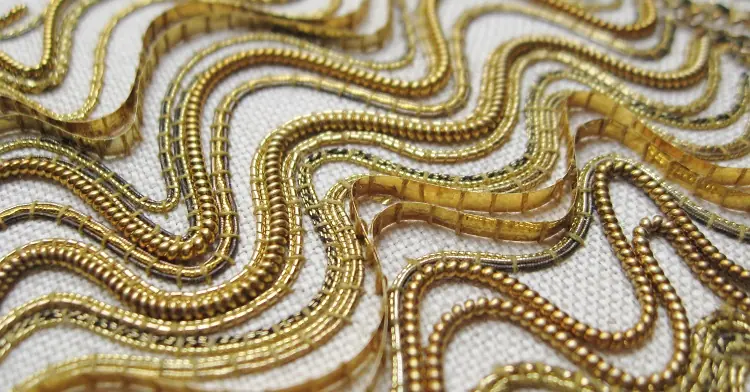
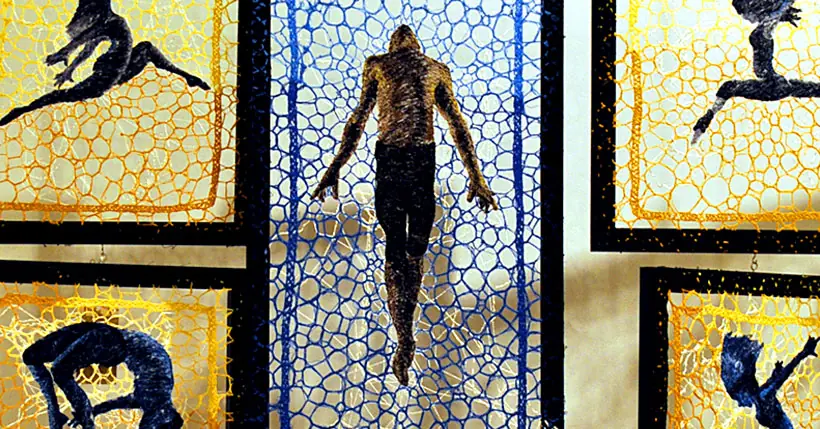
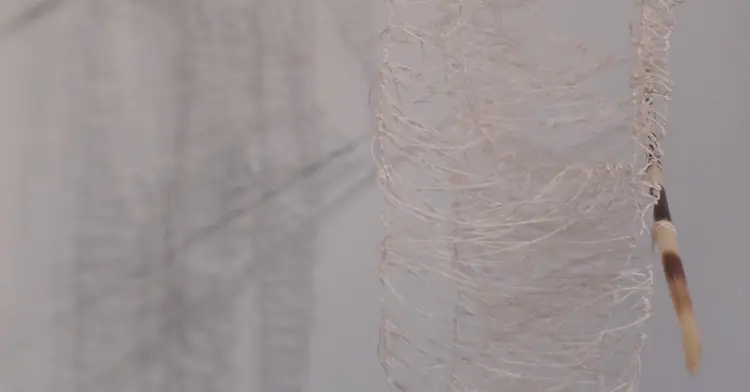
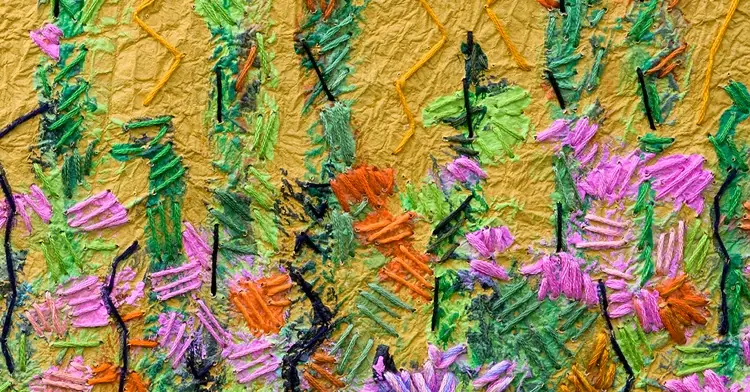
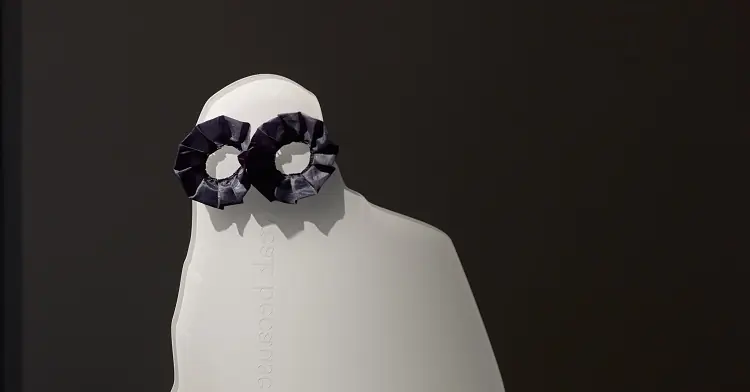
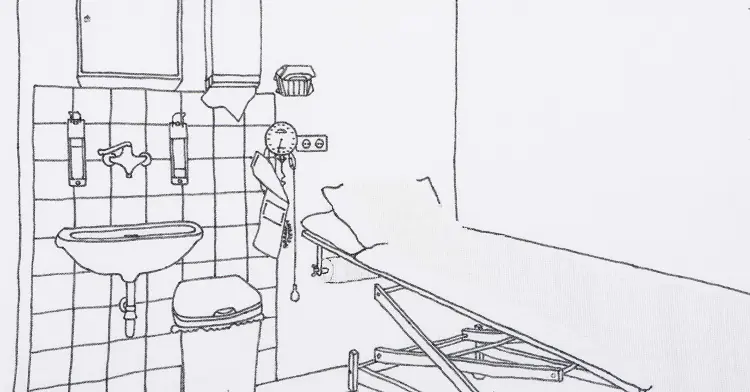
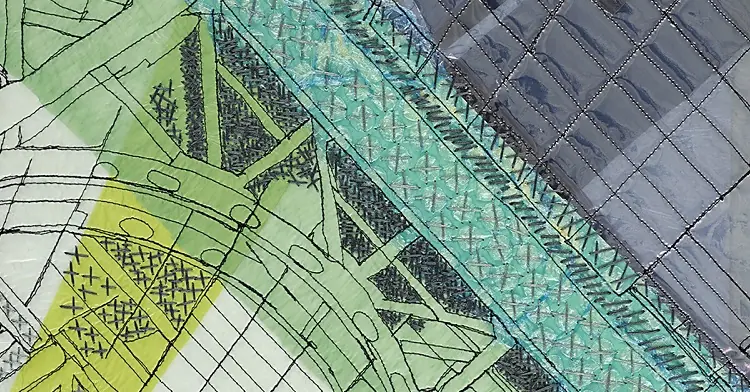
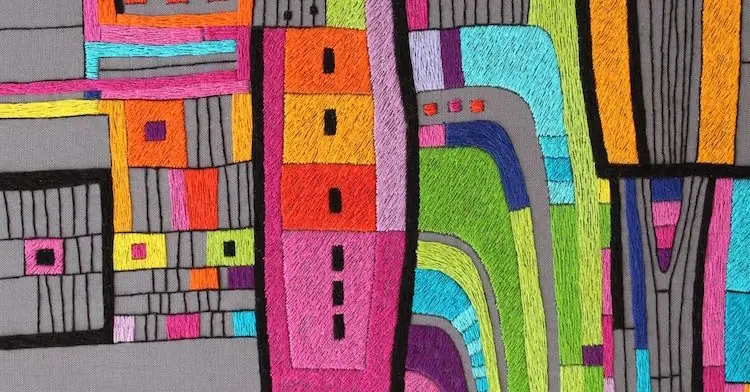
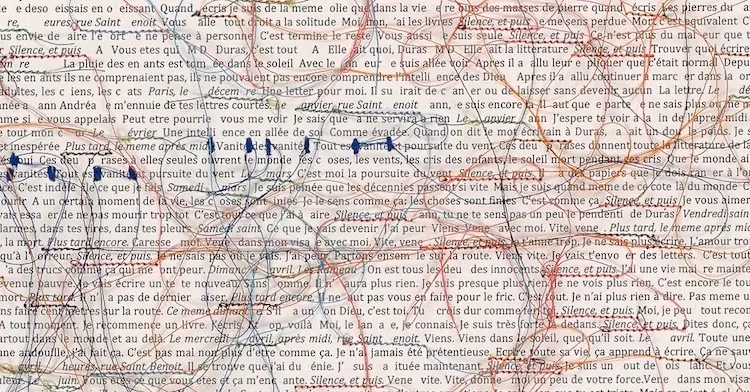
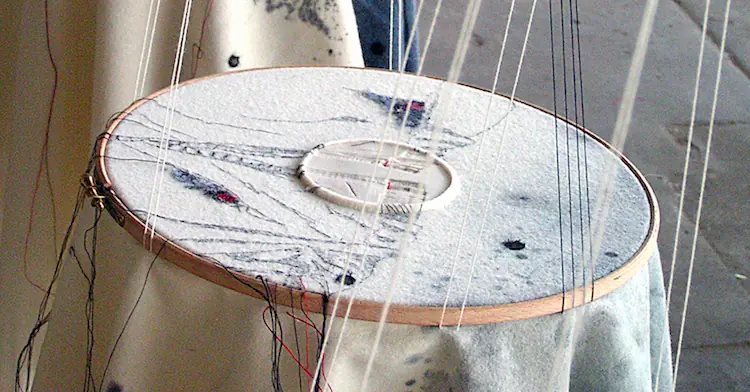
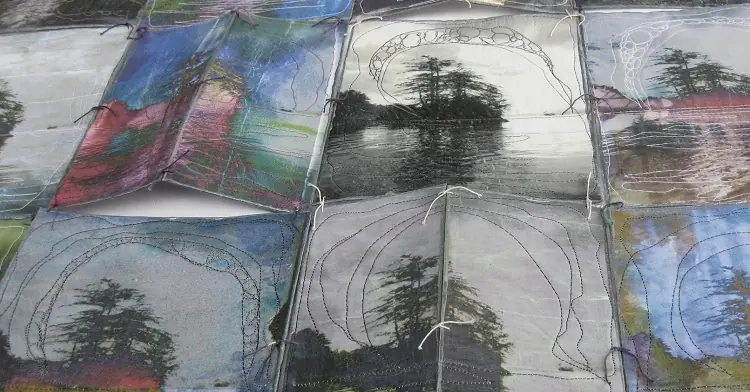
8 comments
Textile Mentor
What a great article thankyou for sharing this. I specifically love the embroidery samples.
Linda Tomlin
Your article here is just wonderful Tracy. I appreciate your artistic temperament and approach to all you do. I love the ideas you have of perfecting one stitch to the maximum and keep exploring. Your comments about learning from everyone and everywhere is a great thought for continuing to develop.
All the best,
Linda Tomlin
Williamsburg VA
Marilyn Kerns
Really appreciate your thoughtful sharing. I sew, knit and spin. Now I want to expand to embroidery. You gave me inspiration.
Shelagh Gardiner
I’ve read the article by Tracey Franklin, – got 1 of her books and been to 1 of her workshops – but I don’t understand what she means by double medium weight calico. Does she
simply mean two layers? (ref. Herringbone Sampler).
Thank you, I hope you can help.
TRACY FRANKLIN
Hello Shelagh, Yes, it is simply that. Medium weight calico, working on 2 single layers or doubled. Working through two layers gives more body or weight to your work. A single layer tends to pucker up, or not hold the surface stitching so well. Hope this helps!
Shelagh
Many thanks Tracy. Much appreciated.
TRACY FRANKLIN
You’re very welcome Shelagh, and the vintage French fabric sounds divine!
Shelagh
Many thanks Tracy. I’m going to give that a go. I also have some vintage French fabric (métis) which I particularly like because of its firm texture. It works well with some white threads, and herringbone is one of my favourite stitches. I never thought to use it as the basis for a sampler, but yours has inspired me to make a start on a project. All good wishes